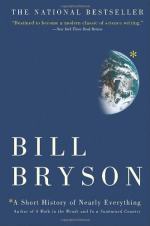
|
| Name: _________________________ | Period: ___________________ |
This quiz consists of 5 multiple choice and 5 short answer questions through Part 2, Chapter 7.
Multiple Choice Questions
1. What happened to the dinosaur bone discovered in New Jersey in 1789?
(a) It was sold to a museum in England.
(b) It had been permanently misplaced.
(c) It is part of a wealthy family's private collection.
(d) It is on permanent display at the Smithsonian.
2. How far away is Proxima Centauri from Earth?
(a) 700 million times farther than Mars.
(b) 390 million times farther than Venus.
(c) 120 million times farther than our sun.
(d) 100 million times farther than our moon.
3. What is a supernova?
(a) A young, emerging star.
(b) A dying star.
(c) A white dwarf.
(d) A red giant.
4. In addition to being a seventeenth-century astronomer, Christopher Wren designed:
(a) Cathedrals.
(b) Clothes.
(c) Swords.
(d) Eyeglasses.
5. What components were central to the apparatus that Henry Cavendish used to determine the density of Earth?
(a) Weights, counter-weights, and pendulums.
(b) Boiling water, a tub, and a barrel.
(c) Chutes and slides.
(d) A burner, gases, and switches.
Short Answer Questions
1. Between 1980 and 2003, how many supernovas did the Reverend Robert Evans of Australia discover using a simple backyard telescope?
2. In the 1700s, people were finding holes in theories. For example, if the thoughts on erosion were completely correct, then:
3. Many scientists suspect that Pluto is just a comet of the:
4. When radiation was first discovered, people thought it must have:
5. What massive bone belonging to a dinosaur was found in New Jersey in 1789?
|
This section contains 262 words (approx. 1 page at 300 words per page) |

|




